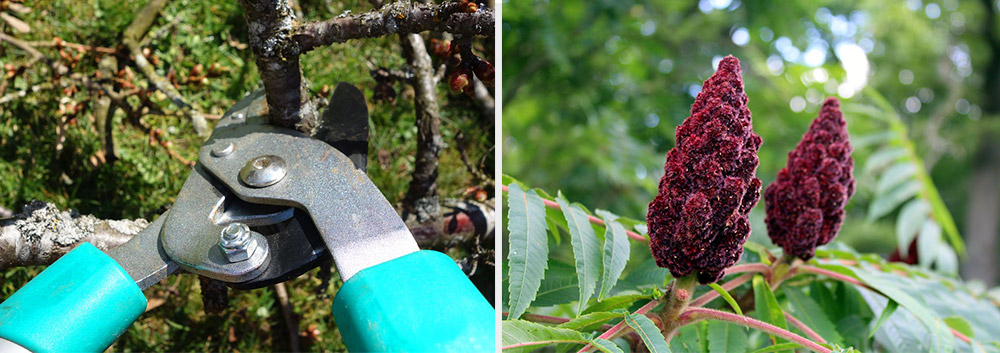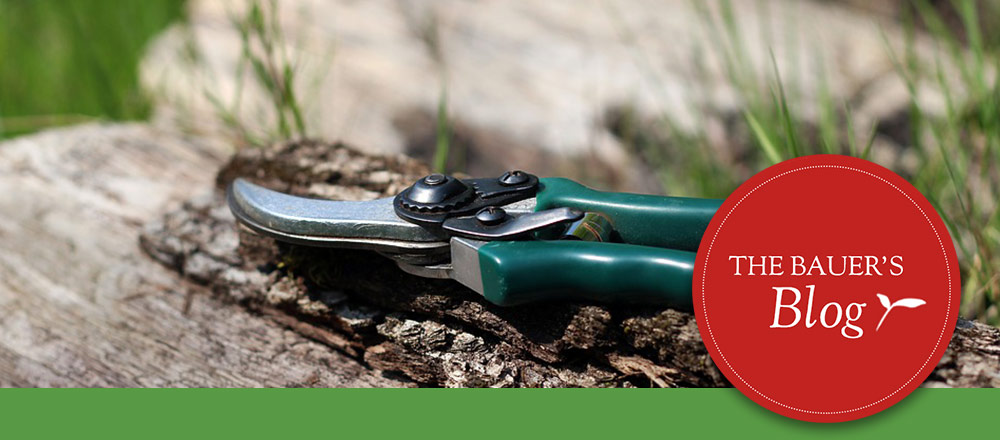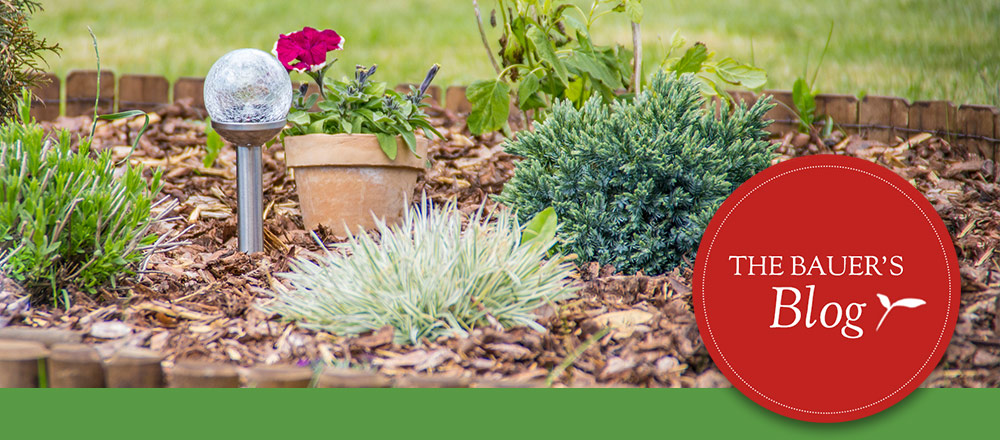“The purpose of pruning is to improve the quality of the roses, not to hurt the bush.”
– Florence Littauer
Pruning is an important step in our garden care routine to keep our plants healthy and thriving. It might seem counterintuitive to help your plants grow by cutting away from them, but trimming unhelpful growth will help them to stay strong season after season.
Knowing when to prune is vital to promoting the best health in your garden. If you prune your plants at the wrong time, it could actually cause a variety of issues for them. Pruning properly and at the right time requires a little knowledge – once you get to know your garden, it’ll be easy to make sure you’re meeting its needs.

Pruning Basics:
The actual act of pruning doesn’t have to be intimidating. It’s really as easy as trimming your hair. You’ll be cutting away the dull and dead ends that are preventing your hair from growing. With the dead weight gone, your hair is free to grow longer and stronger than before – the same applies to your plants.
When you are pruning, your goal is to remove parts of the plant that are preventing healthy growth. This can include buds, blooms, branches, and foliage that are dead or have been damaged by pests or weather. You might also want to selectively remove branches that aren’t growing properly – anything too lanky or stubby, anything not producing new growth, or anything rubbing together or touching the ground.
Good pruning isn’t just hacking off the dead weight, though. To keep your garden healthy, you’ll need to make effective cuts by making swift and clean amputations. Cut away from the direction of growth at a 45° angle with sharp pruning shears to make a cut that will heal quickly. Also make sure to tidy up the fallen branches and leaves under your plant after pruning. Your garden will not only look tidier, but you’ll be protecting your plant from potential diseases.

Late Winter Pruning:
In our area, “late winter” typically means February to April, when the temperatures will be warming soon, but the sap hasn’t started to flow. This is the best time to prune the trees and shrubs that bloom on new growth. This typically includes all our beloved fruit trees, as well as flowering deciduous trees. These families of plants need new growth in order to bloom. By cutting away older growth right before the blooming season begins, you’re setting them up to start new spring growth to bloom on, giving you more blooms and delicious fruits.
Once the spring starts, the sap will be running in these trees. You might not damage your plant if you prune too late in the season, but cuts made when the sap is running will stay exposed longer, delaying their healing. By cutting earlier, you’ll do more to help your plant prepare for the blooming season while helping them heal faster, avoiding exposure to disease. Seeing as pruning is all about keeping your plants healthy and thriving, the timing for these varieties is important!
Spring Pruning:
Spring bloomers will need their annual haircut in the spring, just after they’ve finished blooming. These plants – like lilacs, azaleas, and magnolias – all bloom on old growth. As soon as that year’s blooming season comes to a close, they start to set the foundation of buds for the next spring. This can make it hard to prune them to keep them healthy, without risking trimming off all the buds for the next year. Pruning them immediately after blooming will let your plants start new growth to prepare their new buds for the next season.
You should also wait until spring to prune some of your foliage shrubs, who aren’t known for their impressive flowers. Shrubs like sumacs, honeysuckles, and dogwoods are best pruned before they bloom for good growth during the season.

Fall is when we and our gardens are preparing for the coming of winter. Trees and shrubs are very vulnerable, as they are left out in the chill all winter. Any new growths that they would produce from pruning at this time will struggle or even die off when the mercury drops. Pruning late in the season could result in a sad and sickly plant.
There are exceptions to this rule, however. Oak trees should only be pruned in the fall – in fact, they shouldn’t even be touched until October. Oak wilt has a long and terrible history here in Minnesota. This fungal disease is carried by beetles who can’t resist an oak tree with fresh wounds, and a freshly pruned tree in the spring or summer can be overwhelmed and infected. Although their new growth may still suffer in the cold temperatures, it’s a worthwhile sacrifice to take care of trimming back your oak in a season that is too cold for the beetles and rot to set in.
Perennials can be pruned in the fall, as well. They’ve spent the whole season working hard to grow, and will need old growth to be removed to get ready for the next year’s growing season. The exact pruning process can change depending on the plant, from deadheading blooms to trimming them all the way to the roots. Get to know your garden and your perennials to meet their needs in the fall so they are ready to thrive in the warmer spring weather, year after year.
The “spring cleaning” of removing the old to usher in the new isn’t just for the spring season in your garden. Your garden will thrive and reward you with more growth and color every year if you use this pruning calendar as a guide. With a bit of knowledge, pruning can be an easy investment in the future of your garden!







Leave A Comment